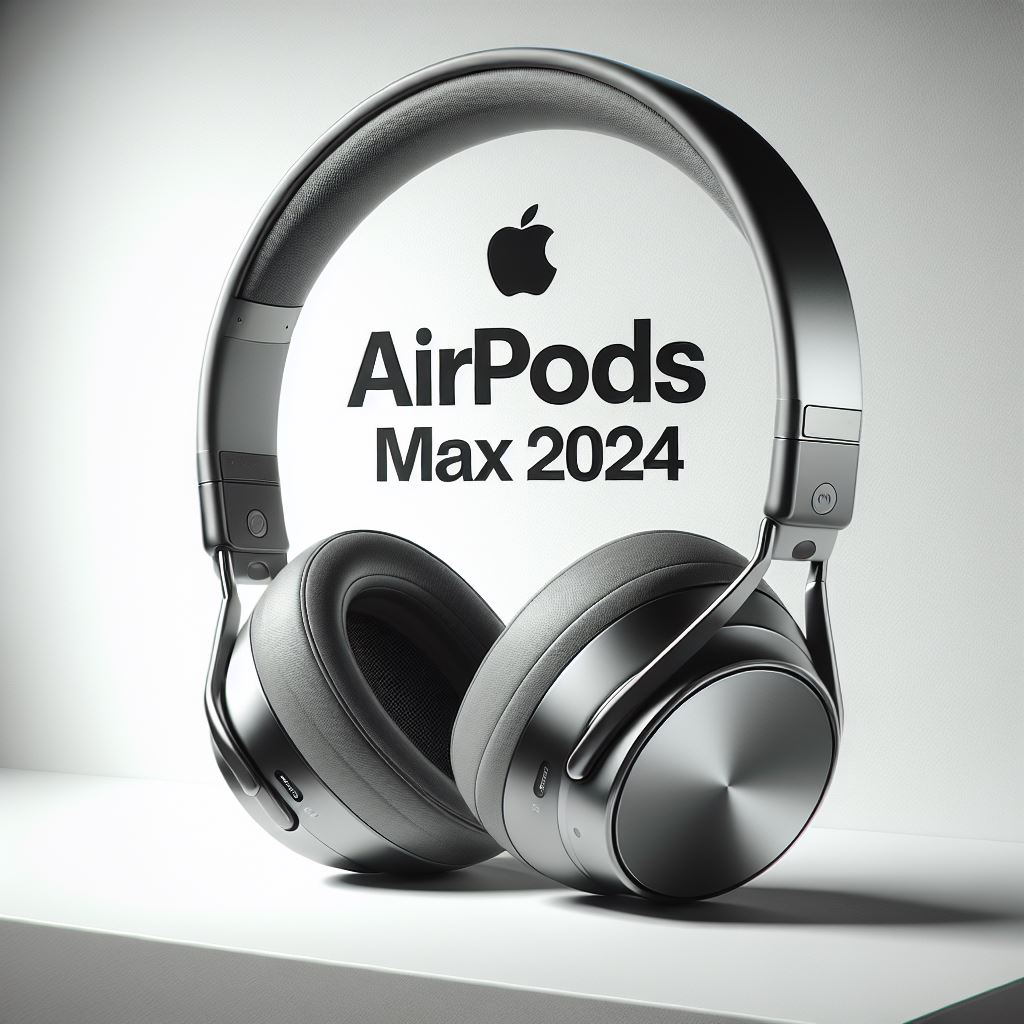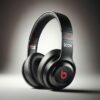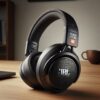Back to the TOP HEADPHONES / EARBUDS Main-page
#4. Apple AirPods Max
A Premium Relic or Still a Sound Investment?
Okay, let’s put the Apple AirPods Max under the microscope from the perspective of a buyer in May 2025. These headphones made a bold statement when they launched in December 2020, marking Apple’s entry into the premium over-ear audio space. Over four years later, they’re still a topic of discussion, but how do they hold up in today’s market?
The Apple AirPods Max headphones are undeniably a product of high ambition, blending premium materials, advanced audio technology, and that seamless Apple ecosystem integration. When released, they carried a hefty price tag and a distinctive design. As of May 2025, with nearly 4.5 years on the market and the tech world having moved on considerably (potentially with a successor heavily rumored or even available), the original AirPods Max occupy an interesting, if somewhat precarious, position.
The Allure of AirPods Max: What Still Captivates in 2025?
Despite their age, certain aspects of the AirPods Max continue to appeal:
- Exceptional Build Quality & Unique Design: Crafted from anodized aluminum, stainless steel, and a breathable knit mesh canopy, the AirPods Max feel incredibly premium and durable. The memory foam ear cushions offer a comfortable, albeit snug, fit for many.
- High-Fidelity Audio Performance: Apple’s custom dynamic drivers deliver a rich, detailed, and well-balanced sound signature. Combined with Adaptive EQ, which tunes the audio in real-time to your ear fit, the listening experience is often excellent.
- Impressive Active Noise Cancellation (ANC) & Transparency Mode: At launch, the ANC was among the best available, utilizing a sophisticated system of nine microphones (six outward-facing for external noise, two inward-facing for what you hear, plus one for voice) to effectively silence the world around you. The Transparency mode also remains exceptionally natural-sounding.
- Seamless Apple Ecosystem Integration: For those deep in the Apple ecosystem, the H1 chip in each earcup provides effortless pairing, Automatic Switching between iPhone, iPad, and Mac, Audio Sharing, and hands-free “Hey Siri” voice control.
- Personalized Spatial Audio with Dynamic Head Tracking: This remains a standout feature, creating an immersive, theater-like 3D audio experience for compatible music, movies, and TV shows. The head tracking is precise, anchoring sound to your device.
Key Specifications & Features:
- Connectivity:
- Wireless: Bluetooth 5.0. In 2025, this is a dated standard. Newer devices (including any potential AirPods Max successor) would feature Bluetooth 5.2, 5.3, or even 5.4, possibly with LE Audio for improved efficiency and audio quality options.
- Wired: No direct 3.5mm jack. Requires a separate Apple Lightning to 3.5 mm Audio Cable (sold separately, $35) for wired listening, and this connection is not a pure analog bypass (it involves an extra digital-to-analog conversion).
- Compatibility:
- Deepest integration with Apple devices (iOS, iPadOS, macOS, watchOS, tvOS).
- Functions as standard Bluetooth headphones with Windows PCs, Android devices, and other Bluetooth-enabled sources, but without the advanced Apple-specific features.
- Microphones: Nine in total, contributing to ANC, Transparency Mode, and voice call clarity.
- Controls: The Digital Crown offers precise, tactile control for volume, playback, calls, and Siri, which many users prefer over touch controls. A separate button controls ANC/Transparency modes.
- Sensors: On-head detection for automatic play/pause. Gyroscopes and accelerometers for dynamic head tracking.
Cost & Value Proposition:
- Original Retail Price: $549.
- Typical 2025 Price: While the prompt mentions potential sale prices around $475, for a 4.5-year-old device, even this is very high unless there’s still no direct successor from Apple. In 2025, you might find them on the used/refurbished market for less, but new “old stock” at such prices faces immense competition from newer, more advanced headphones from competitors, often at lower prices. Their value is highly questionable at near-original prices this far from launch without a significant refresh.
Critical Considerations for a Buyer (What Feels Dated or Problematic):
- Age & Lack of Update: By May 2025, a 4.5-year product cycle without a successor is exceptionally long for Apple’s premium audio. This makes the original AirPods Max feel significantly dated.
- Lightning Port for Charging: This is a major drawback. Most of the tech world, including much of Apple’s own lineup, has transitioned to USB-C. Carrying a Lightning cable just for your headphones in 2025 is an inconvenience.
- Bluetooth 5.0: Lacks the benefits of newer Bluetooth standards (range, stability, multi-device handling, potential for higher quality codecs like LC3 via LE Audio).
- The “Smart” Case: Widely criticized for its minimal protection and for being the primary way the headphones enter an ultra-low-power state (they don’t have a traditional power button). It still feels like an awkward solution.
- Weight: At 385g, they are among the heaviest headphones in their class. While comfortable for some, others may experience fatigue during long listening sessions.
- Battery Life: Up to 20 hours with ANC/Spatial Audio was acceptable in 2020 but is now average at best. Many 2025 competitors offer 25-30+ hours. The quick charge (1.5 hours from 5 mins) is also less impressive than many current offerings.
- No User-Replaceable Battery/Earpads (Officially): While earpads are magnetically attached and replaceable, official replacements are expensive. Battery replacement requires service.
Who Should Still Consider the Original AirPods Max in 2025?
The target audience for the original AirPods Max in 2025 is very narrow:
- Die-Hard Apple Ecosystem Devotees: If you absolutely prioritize the deepest Apple integration, love the specific aesthetic, and find a pair at a substantial discount (e.g., well under $350-$400, likely refurbished or used).
- Collectors or Design Aficionados: Those who appreciate the unique design and build as a piece of Apple history.
- Users with Very Specific, Light Needs within the Apple Ecosystem: If all other concerns (price, Lightning, age) are secondary to having an Apple-branded over-ear with Spatial Audio.
How They Compare: The Premium Headphone Arena
The AirPods Max, at their original or slightly discounted price, would be competing against the very latest and greatest from other brands in 2025, which would likely include:
- Sony WH-1000XM6 (or a potential XM7): Sony’s flagship line typically offers leading ANC, excellent sound, longer battery life, USB-C, and more advanced Bluetooth, often at a lower price.
- Bose QuietComfort Ultra Headphones (or its successor): Bose would have its latest premium offering, known for comfort and top-tier ANC.
- Sennheiser Momentum 5 (or successor) / Accentum Plus: Offering strong audio fidelity, modern features, and often better codec support outside the Apple ecosystem.
- Bowers & Wilkins Px8 (or its successor): Luxury build and audiophile sound, often with USB-C and better battery life.
- A Potential AirPods Max 2: If Apple has released a successor by this time, it would be the obvious Apple alternative, presumably addressing many of the original’s shortcomings (USB-C, newer Bluetooth, improved case, potentially lighter weight or better battery). The existence (or continued absence) of a Gen 2 model heavily influences the original’s viability.
Bottom Line: The 2025 Verdict on Apple’s First Luxury Cans
In May 2025, the original Apple AirPods Max headphones are a product largely for Apple purists who prioritize ecosystem integration and design aesthetics above current-generation technology and value. Their premium build and excellent sound quality (especially with Spatial Audio) remain impressive.
However, their age is undeniable. The Lightning port is a significant inconvenience, Bluetooth 5.0 is outdated, the Smart Case remains controversial, and battery life is merely adequate by 2025 standards. At anything close to their original $549 price, or even the $475 sale price, they are very difficult to recommend over newer, more feature-rich, and more conveniently designed competitors, including potentially Apple’s own (long overdue) second-generation model.
If you can find them for a drastically reduced price (e.g., under $300 in excellent condition) and are deeply embedded in the Apple ecosystem, they might offer a taste of Apple’s premium audio. Otherwise, your money is likely better spent on more contemporary headphones that offer better performance, features, and future-proofing for 2025 and beyond.



